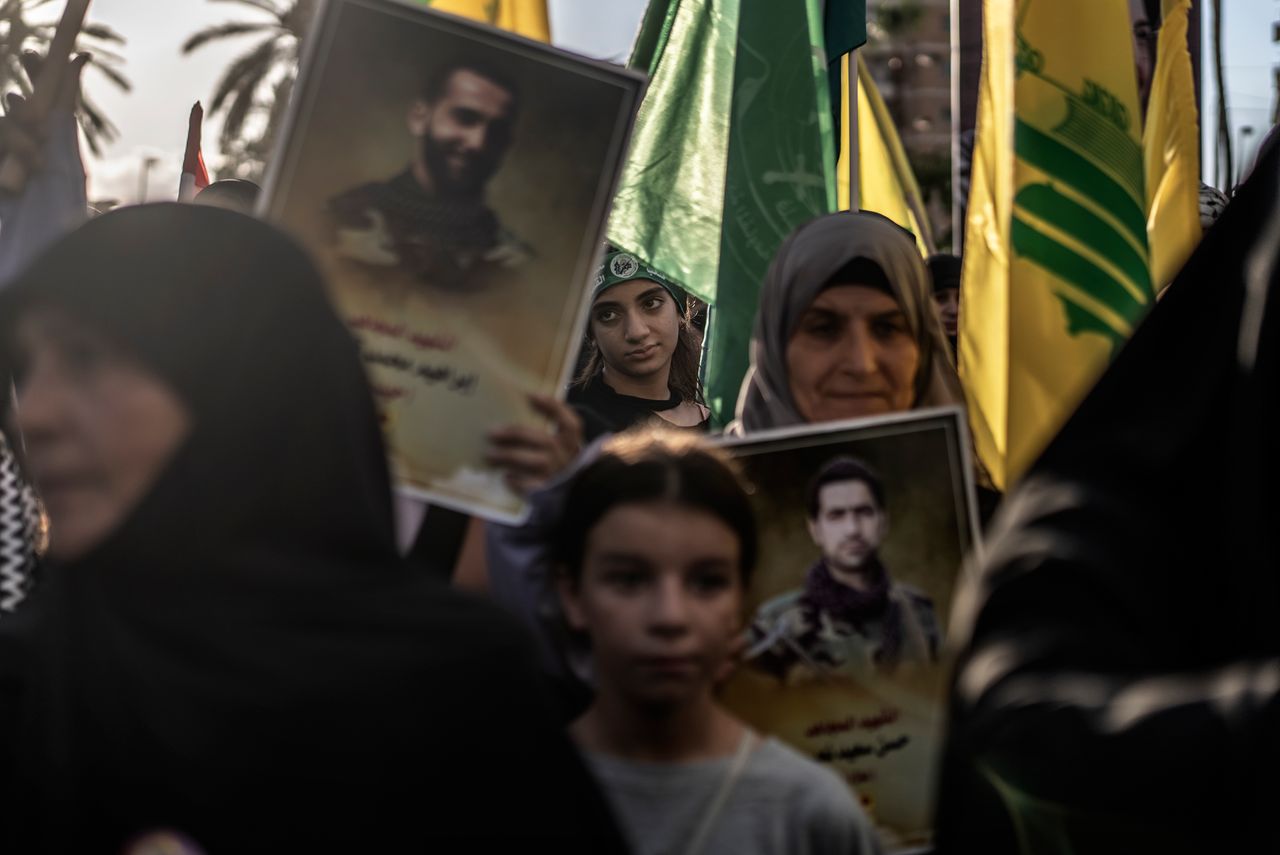Israel and the U.S. are preparing for an unpredictable Iranian retaliatory strike on Israel as soon as this weekend, as Tehran stonewalls diplomats trying to prevent a regional Middle East war.
Israel said Friday its military was on high alert, while U.S. officials worked to get military assets and regional partners ready to stop another attack that some fear could be broader and more complex than an Iranian assault in April .
In that attack, Iran fired more than 300 drones and missiles at Israel, but only after telegraphing its response to diplomats ahead of time and giving Israel and the U.S. time to prepare. Ultimately, most of the projectiles were shot down before reaching Israel.
This time, Israel and its allies are operating in a vacuum.
U.S. and Arab diplomats working to head off a spiral of violence are getting an angry silence from Iran and its Lebanese ally, Hezbollah, which are preparing to retaliate for killings in Tehran and Beirut . An Iranian diplomat, briefed by his government, said attempts by various countries to convince Tehran not to escalate had been and would be fruitless given Israel’s recent attacks.
“There is no point. Israel crossed all the red lines,” the diplomat said. “Our response will be swift and heavy.”
The lack of information has pushed the region to one of its most dangerous moments since the war in Gaza began last October.
“Less telegraphing means potential to misjudge the next step on the escalatory ladder,” said Andrew Tabler, a former Middle East director at the White House’s National Security Council. The result could be a spiral that’s difficult to control rather than a limited tit-for-tat like the one in April.
The Biden administration is taking a cautious approach for now, with no indication Iran has made a decision about whether and how to respond, and an expectation that any response is likely a few days to a week away, a U.S. official said.
The Pentagon late Friday announced it was moving military assets into the Middle East ahead of an expected response. To maintain a U.S. aircraft carrier in the Middle East, Defense Secretary Lloyd Austin had ordered the USS Abraham Lincoln carrier strike group to replace the USS Theodore Roosevelt carrier strike group, which is now in the Gulf of Oman, according to Pentagon spokesperson Sabrina Singh.
Austin also ordered additional missile-defense-capable cruisers and destroyers to both U.S. European Command and U.S. Central Command, as well as deploying additional land-based missile-defense units to the region.
Finally, Austin ordered an additional fighter squadron to the Middle East, a move that boosts U.S. air-defense capability. During the April strike, U.S. jet fighters helped shoot down Iranian missiles headed for Israel.
The U.S. already has significant firepower available, including an aircraft carrier strike group and multiple guided-missile destroyers in the Gulf of Oman, as well as additional destroyers and the USS Wasp Amphibious Ready Group in the eastern Mediterranean, along with missile-defense batteries throughout the Middle East.
The most recent escalation began last month with a rocket strike from Lebanon that killed 12 young people on a soccer field in the Israeli-controlled Golan Heights. Israel blamed Hezbollah, which denied any involvement, and carried out a strike on Beirut that killed a top Hezbollah official , Fuad Shukr, on Tuesday.
Hours later, Hamas political leader Ismail Haniyeh was killed in an Iranian military compound in Tehran. Iran and Hamas blamed Israel, which hasn’t said publicly whether it was involved.
Iran and Hezbollah, a U.S.-designated terrorist group like Hamas, still want to avoid an all-out war and are trying to calibrate their response, people familiar with their thinking said. But both have ratcheted up their public rhetoric against Israel following the attacks, giving them less room to moderate their response without looking like they are backing down.
Iranian Supreme Leader Ali Khamenei said the attack in its capital would engender a harsh response on Israel. Hezbollah leader Hassan Nasrallah , speaking Thursday at Shukr’s funeral, said the killing had moved the conflict into a different phase of escalation.
“You don’t know what red lines you have crossed,” he said. “We’ve entered a new phase different than the previous phase.”
Israeli Prime Minister Benjamin Netanyahu warned the country after the killings that “Difficult days lie ahead of us.” Several foreign airlines have canceled flights to Israel, according to a spokesman for Israel Airports Authority. Airlines also canceled flights to and from Israel leading up to Iran’s attack in April.
Arab officials said the indication from their conversations is that Iran and Hezbollah believe the response, whatever form it takes, needs to be stronger than the barrage in April. Hezbollah has indicated its response might not be a single attack but a series of actions, they said.
Some are concerned an attack could involve not only Iran and Hezbollah but other aligned regional militias like Yemen’s Houthis and militants in Iraq.
The Arab officials said they have passed warnings to Iran on behalf of Israel and the U.S. that Israel is ready to go to war if Hezbollah and Iran respond too aggressively, attacking Tel Aviv or deeper in Israel, for instance. Iranian officials replied that they understood the risk of an escalatory spiral but Khamenei is under internal pressure from hard-liners to respond.
Pressed with similar warnings, Hezbollah told Arab mediators, “We will respond in the battlefield,” the officials said.
The combination of antagonists this time heightens the risks compared with the face-off between Iran and Israel in April, said Helima Croft , a geopolitical analyst at Canadian bank RBC and a former U.S. security official.
“At the very least, the events of the last few days could trigger a dangerous fog-of-war dynamic where red lines are imperceptible and the risk of serious miscalculation is magnified,” Croft said.
There are still constraints on Iran’s and Hezbollah’s response. In addition to wanting to avoid a war, both are wary of giving away their capabilities or positions to Israel, the people familiar with their thinking said.
Independent geopolitical Iranian analyst Mostafa Pakzad said Tehran is struggling to calibrate its response because, while the assassination on its soil calls for retaliation, it can’t afford an uncontrollable escalation.
“The regime has been pushed into a tight corner where only bad options exist,” Pakzad said.
Hezbollah began firing rockets at Israel on Oct. 8, a day after the Hamas-led attacks on southern Israel that left 1,200 people dead and 250 taken hostage. With both sides eager to avoid an all-out war, the strikes and responses have followed a rough, proportionate logic.
The rocket strike that hit the soccer field, however, was the sort of incident many feared could disrupt the careful balance.
As diplomats worked to contain the fallout from that incident and Israel’s retaliatory strike in Beirut, news that Haniyeh had been killed added a volatile new variable to the mix.
Talks are now complicated by Hezbollah’s feelings that it was misled by diplomats who assured it Israel’s response would be limited, a senior Hezbollah official said. Instead, it was provocative on two fronts, targeting a top official and hitting him in Beirut. In addition, civilians were killed.
When Iran was about to launch its massive barrage in April to avenge the suspected Israeli assassination of one of its senior generals, it telegraphed the missile and drone attack so clearly that radio and television stations in Israel were counting down the hours people had left to get home and into shelters.
“They wanted everyone to know,” a U.S. official said.
But not this time, the official said.
Write to Summer Said at summer.said@wsj.com , Benoit Faucon at benoit.faucon@wsj.com and Lara Seligman at lara.seligman@wsj.com



